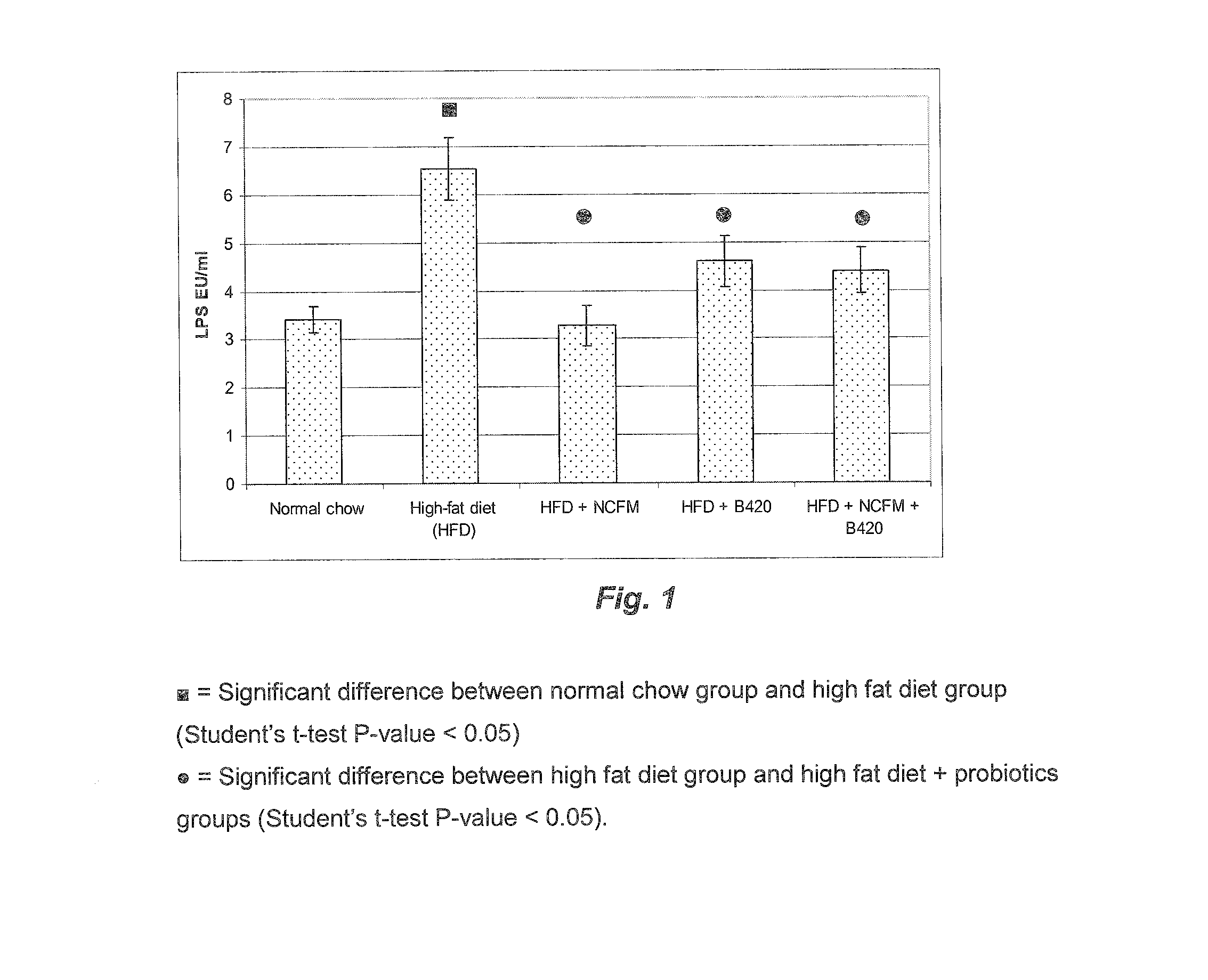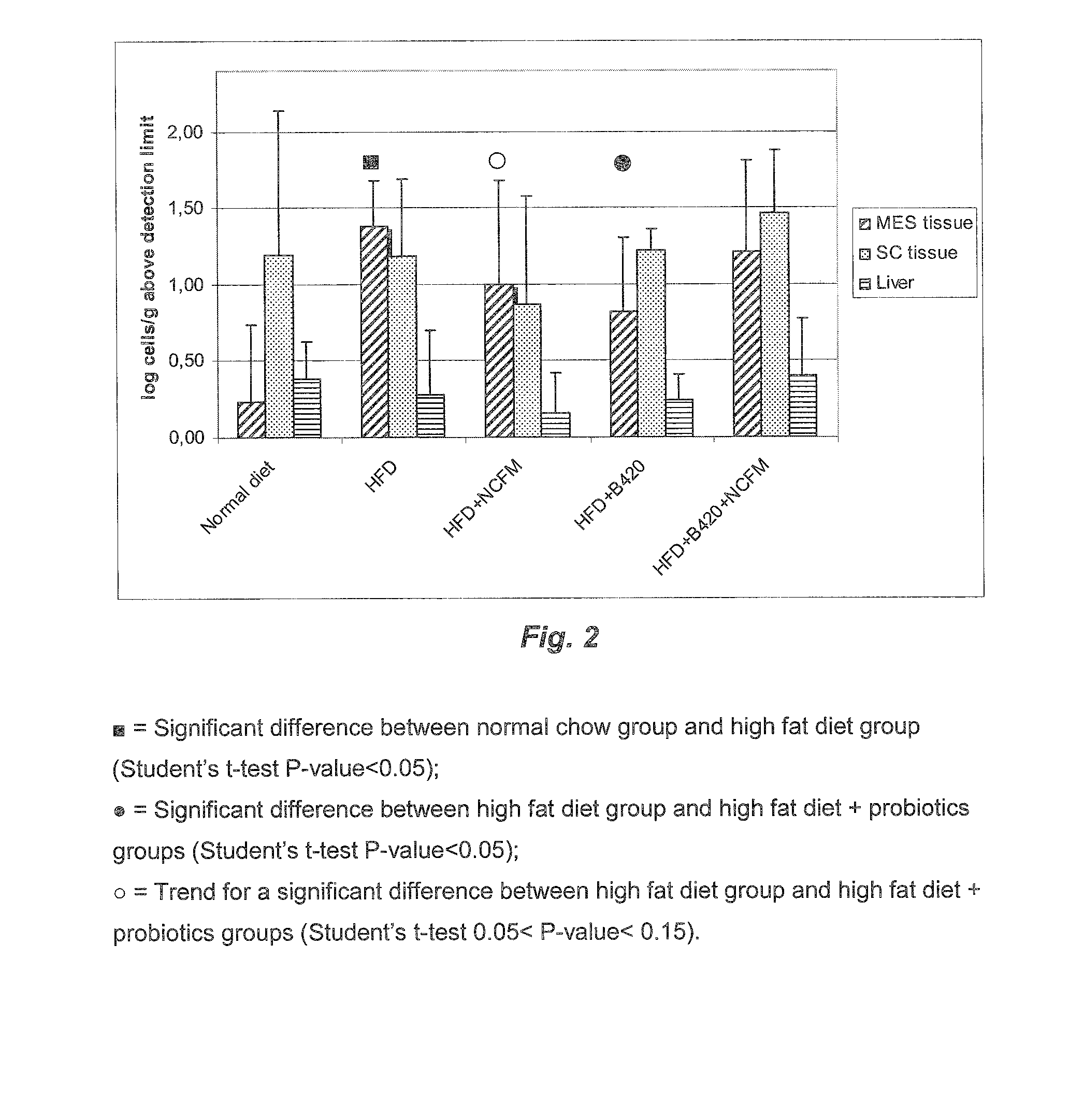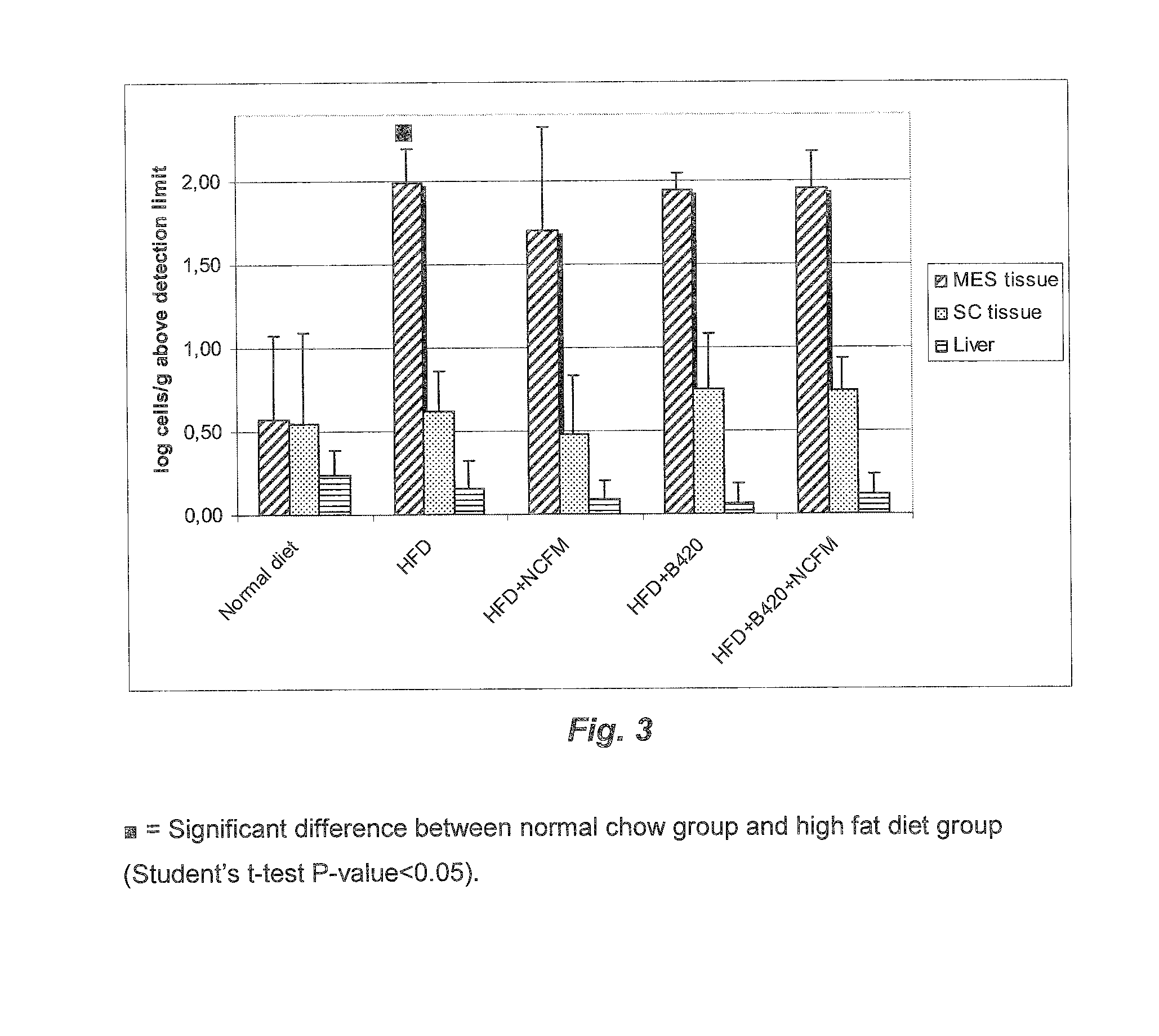Lactic acid bacteria and bifidobacteria for treating endotoxemia
a technology which is applied in the field of lactic acid bacteria and bifidobacteria, can solve problems such as bacterial translocation, and achieve the effects of reducing the elevated adhesion of lipopolysaccharide-containing bacteria, and reducing the elevated adhesion of gram-negative bacteria
- Summary
- Abstract
- Description
- Claims
- Application Information
AI Technical Summary
Benefits of technology
Problems solved by technology
Method used
Image
Examples
example 1
[0185]Materials and Methods
[0186]Animal Model and Probiotic Treatment
[0187]A cohort of fifty C57Bl / 6 10-wk-old male mice were fed a Normal Chow (NC) (A03, SAFE, Augy, France), or a high-fat diet (HFD) (comprising 72% fat (corn oil and lard), 28% protein and Diabetes, 2008, 57, 1470-81; Knauf et al. Endocrinology 200, 149, 4768-77; Cani et al., Diabetologia 2007, 50, 2374-83; Cani et al. Diabetes 2007, 56, 1761-1772 and Turini et al. Swiss Med Wkly 2007, 137, 700-4).
[0188]Following the high fat diet feeding (before probiotic feeding), the mice underwent an intraperitoneal glucose tolerance test. The area under curve was calculated and the mice dispatched homogeneously according to the different experimental groups or ten mice per group (10 mice per group). The data showed that all mice were in diabetic state before probiotic feeding. The mice were fed four more weeks with a normal chow (n=10) or a HFD (n=40). The HFD mice were treated daily for 4 weeks with one of the following:
[0189...
example 2
[0208]Introduction
[0209]The aim of this study was to determine in mice the effect of high fat feeding on intestinal flora, bacterial translocation and glycemia, as well as the potential protective role of Lactobacillus acidophilus NCFM™ (NCFM™) on these parameters.
[0210]Materials and Methods
[0211]Obesity and diabetes were induced on C57BL / 6 male mice by an high animal fat diet (60% fat, HFD). Control mice received standard diet (4% of fat, LFD). From 19 weeks old, these mice received 109 CFU / day of Lactobacillus acidophilus NCFM™ during 3 weeks. Fasting glycemia was measured before and after treatment with NCFM™.
[0212]An intraperitoneal insulin sensitivity test was performed the day before the sacrifice. Analysis of colonic adherent flora and bacterial translocation was done by the following methods.
[0213]Bacterial Analysis
[0214]After dissection colon and ileum were harvested. Ileal and colon wall was used to identify and quantify the adherent flora.
[0215]Samples were conserved up t...
example 3
[0228]Measurement of Mucosa-Adherent and Luminal Escherichia coli and E. Coli Translocation
[0229]Effect of probiotic treatment on mucosal adhesion and bacterial translocation of E. coli was determined by culturing. The mouse model and the probiotic treatment used were the same as described in Example 1 above. In addition, a group receiving a combination of the probiotic with a prebiotic component (fructo-oligosaccharides at 0.2 g per animal per day) was included.
[0230]Fasted mice were gavaged with 109 colony forming units of ampicillin resistant E. coli isolated from the mouse and rendered ampicillin resistant by the mean of a plasmid expressing the β-lactamase gene under the control of a prokaryotic promoter. Two hours later the mice were sacrificed and the mucosa or the lumen from the duodenum, the jejunum, the ileum, the caecum and the colon, were harvested separately, diluted, plated onto ampicillin-containing agarose and incubated overnight at 37° C. The number of colonies was ...
PUM
 Login to View More
Login to View More Abstract
Description
Claims
Application Information
 Login to View More
Login to View More - R&D
- Intellectual Property
- Life Sciences
- Materials
- Tech Scout
- Unparalleled Data Quality
- Higher Quality Content
- 60% Fewer Hallucinations
Browse by: Latest US Patents, China's latest patents, Technical Efficacy Thesaurus, Application Domain, Technology Topic, Popular Technical Reports.
© 2025 PatSnap. All rights reserved.Legal|Privacy policy|Modern Slavery Act Transparency Statement|Sitemap|About US| Contact US: help@patsnap.com



